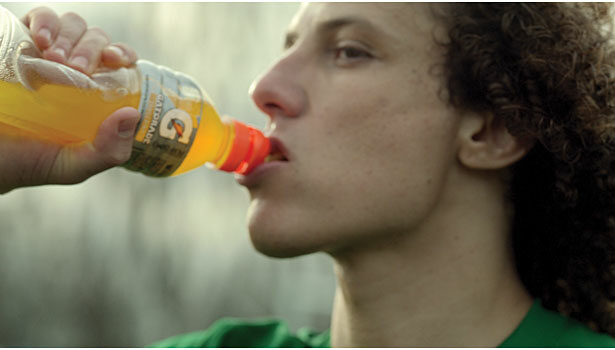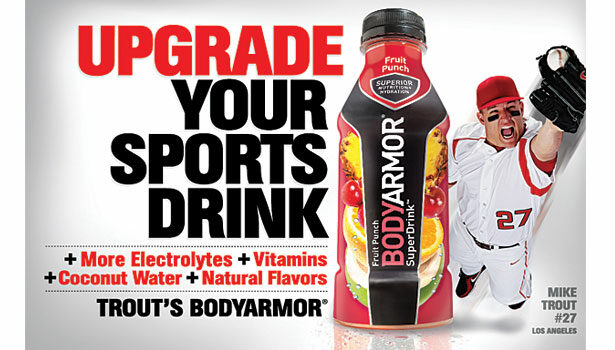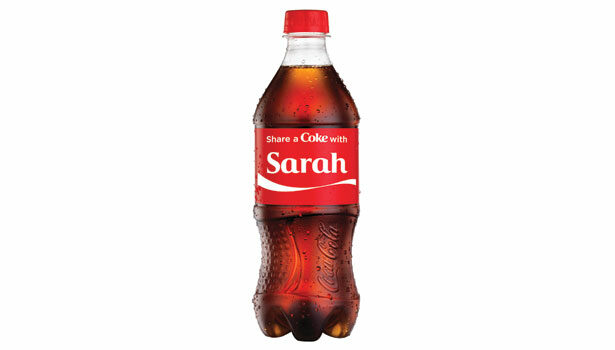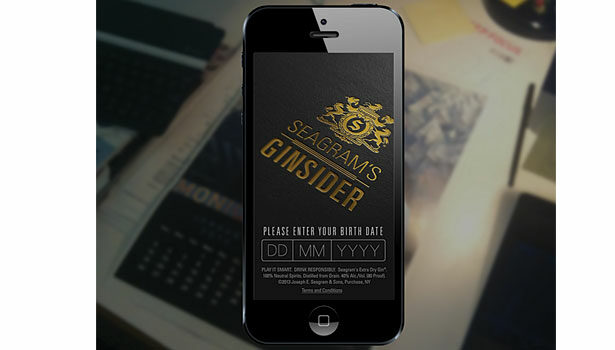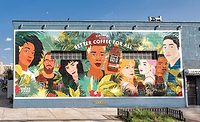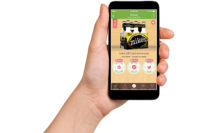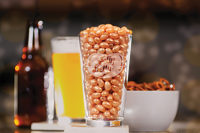Do you remember the 1995 Budweiser commercial with three frogs croaking the syllables in the brand’s name? How about the 2010 Folgers commercial in which a young woman tells her father about her recent engagement over a cup of coffee? Although these commercials have been off the air for years, many consumers probably still can recall the spots and the brands associated with them. This is because these advertisements forged emotional connections with consumers, whether by using humor, like the croaking frogs, or something more sentimental, like honoring wedding traditions and sharing a father-daughter moment. Today, these still are the types of commercials that consumers want to see from brands.
According to New York-based Nielsen’s September 2013 report “Global trust in advertising and brand messages,” 47 percent of global respondents said that humorous advertising messages resonate most with them. Likewise, North American consumers rated advertisements that make them laugh as most appealing. Beyond humor, 46 percent of global consumers said they connect with advertisements that showcase real-life situations, and 38 percent like advertisements that include the themes of family, health and values, it says.
“For advertisers, it’s vital that consumers make a memorable and meaningful connection with both the message and brand,” said Randall Beard, global head of advertiser solutions at Nielsen, in the report. “Regardless of the ad delivery format, be it print, billboard, TV or online, effectively reaching consumers is predicated upon having a message that favorably impacts consumers when making a purchase decision. These favorable decisions are a key metric of marketing [return on investment].
“Recent Nielsen research has found that although regional nuances in preference do exist, comedic relief, relatable situations, and those that focus on family and health themes speak to the hearts and minds of consumers around the world,” he concluded.
Prior to the FIFA World Cup 2014, Gatorade, a brand of Purchase, N.Y.-based PepsiCo Inc., released its “Bibbidi-Bobbidi-Boo” commercial, which mixes a health and fitness message with sports action and a touch of nostalgia. The 60-second spot portrays the Cinderella-like transformation that competing teams go through to prepare for soccer matches. The sports-action commercial also features the iconic song “Bibbidi-Bobbidi-Boo” from Walt Disney’s 1950 animated feature “Cinderella,” for a nostalgic twist.
Commercials with emotional connections also were among those top-ranked by media outlets following Super Bowl XLVIII this past February. The Top 2 commercials on San Jose, Calif.-based TiVo Inc.’s list were the humorous “Comedians in Cars Getting Coffee” trailer, which featured comedians and “Seinfeld” stars Jerry Seinfeld and Jason Alexander, as well as Anheuser-Busch’s “Puppy Love” fourth-quarter Budweiser commercial, which told the emotional story of a friendship between a puppy and a Clydesdale.
USA Today’s Super Bowl Ad Meter listed Budweiser’s “Puppy Love” as the best Super Bowl 2014 commercial, based on popular consumer votes, but also counted other sentimental commercials, such as Budweiser’s third-quarter “Hero’s Welcome” commercial, and inspirational commercials, such as The Coca-Cola Co.’s fourth-quarter “Going All The Way” commercial, among the Top 10.
“The best work in any category is the stuff that creates an emotional connection,” says Rob Conrad, chief creative officer of Canteen Communications Co. in Chicago and adjunct marketing lecturer at the Medill School of Journalism, Media, Integrated Marketing Communications at Evanston, Ill.-based Northwestern University. “Functional benefits [such as] taste, refreshment, etc., are necessary to become part of the consideration set, but in the end, people make decisions with their hearts.
“Touching someone’s heart is not easy,” he continues, “but it’s worth the effort, because once you’re there, you’ve gotten beyond a transactional relationship to become part of a person’s life.”
Know your audience
To become a part of a target consumer’s life, brands first have to determine who that target consumer is. “The most crucial element of any marketing program (assuming it’s for a good product) is a deep understanding of your audience,” Canteen Communications Co.’s Conrad says. “Once you’ve uncovered an insight as to why people behave and make choices relative to what you’re selling, you can create messages that truly resonate with them.
“We view awareness as the price of entry,” he continues. “The goal is to make a difference in thinking or behavior. You can’t do that without understanding who you’re speaking to.”
While targeting consumer demographics might previously have been as simple as choosing a gender and age group, today’s advertising has to be even more targeted than that, notes Marty Kohr, another marketing lecturer at Medill who has co-taught classes with Conrad. Brands instead need to focus on a specific psychographic or segmentation based on personalities, values, interests, opinions and lifestyles, he says.
For example, Budweiser, with its “Grab some Buds” tagline, focuses on a psychographic group of men who value male camaraderie and good times with good friends, Kohr points out. “That’s big, but it’s a specific, clear brand message,” he explains.
In light of continued health and wellness trends, some brands can opt to target a specific psychographic based on how it prioritizes these values. Chicago-based Information Resources Inc. (IRI) identified six new groups of consumer packaged goods consumers categorized by their health and wellness opinions as part of its NutriLink consumer segmentation. For example, Sensible Super Moms, who have a median income of $46,000, a median age of 42, and account for 20 percent of the population, prioritize eating right and exercising to ensure that they and their families look and feel good, according to the market research firm. These consumers also prefer fresh food and actively seek information about nutrition and healthy eating, it says. However, they also think that indulgent snacks can be part of a healthy diet, it adds.
To best connect with these types of consumers, information-based campaigns might be the way to go, according to Jeff Hilton, partner and co-founder of BrandHive, Salt Lake City. “I think campaigns which focus on reasonable health claims and take a more transparent approach are most effective,” he says. He suggests BodyArmor SuperDrink’s marketing campaign and Nawgan’s branding as examples.
BodyArmor SuperDrink, a brand of Los Angeles-based BodyArmor Nutrition LLC, partners with professional athletes, including women’s soccer star Sydney Leroux, Anaheim Angels outfielder Mike Trout, and New England Patriots tight end Rob Gronkowski, to spread the word about the health benefits of the beverage line. BodyArmor offers consumers “superior nutrition, superior hydration, superior taste” through 100 percent of the recommended daily values of vitamins A, C and E; 200 percent of the recommended daily values of vitamins B3, B5, B6, B9 and B12; potassium; polyphenols; amino acids for recovery; l-carnitine for stamina; and coconut water for hydration, the company says.
To express its functional benefits, Nawgan features a brain on the front of its packaging as well as the tagline, “What you drink when you want to think.” These alertness beverages of Dana Point, Calif.-based Nawgan Products LLC contain Cognizin citicoline, a unique combination of choline and cytidine that has been shown to improve attention span, according to the brand. Even the brand’s promotional videos show Nawgan as an intelligent beverage that is smart enough to make conversation with other foods and beverages in the refrigerator. This all goes back to highlighting the functional benefits of the brand through informational marketing.
In other marketing instances, brands can get really personal and call out to consumers by their first names. The Coca-Cola Co., Atlanta, is greeting consumers on a first-name basis this summer by swapping its iconic Coca-Cola script logo with one of the Top 250 most popular names for millennials and teens. The new campaign is intended to help consumers share moments of happiness and get to know each other a little better, as the labels on 20-ounce bottles of Coca-Cola, Diet Coke and Coke Zero specifically recommend that the consumer “Share a Coke with Sarah” or Blake or Tamika or Hassan, among other popular names. To include people with names that are not in the Top 250, other 20-ounce bottles, as well as 1.25- and 2-liter bottles, feature group names, like Family or Friends. In addition, some 12-ounce cans feature colloquial nicknames like “BFF,” “Star,” “Bestie,” “Legend,” “Grillmaster,” “Buddy” and “Wingman.”
Where the consumers are
Once brands have their target consumer psychographic identified, they need to make sure they put their message where the consumer will most likely see it.
While TV commercials used to be an effective way to reach consumers, in this age of recording TV shows and skipping through the commercials, this marketing outlet is no longer effective, notes Bill Sipper, managing partner at Cascadia Managing Brands LLC, Ramsey, N.J. “Those who want to engage consumers will need to do so via the Internet … if they want the largest bang for their buck,” he says.
According to an eMarketer report, the average U.S. Web user spends 23 hours a week emailing, texting, using social media, and utilizing other forms of online communication. EMarketer also estimates that U.S. adults spend an average of 5 hours and 46 minutes viewing digital media each day across online and mobile platforms.
More than two-thirds of mobile subscribers in the United States own smartphones, and these users spent an average of 34 hours using them to access apps and the mobile Web last December, according to Nielsen’s February 2014 report “How Smartphones are Changing Consumers’ Daily Routines Around the Globe.” This is up an average of six hours from the prior-year period, it says. In addition, American consumers pick up their smartphones seven times a day, on average, to use apps, play games, access entertainment or use social media, it notes.
With consumers carrying these connected devices right in their pockets in addition to being to exposed to media across other marketing platforms, brands can reach many consumers at most times of the day or night in many different locations. In fact, by 2015, it is estimated that Americans will consume both traditional and digital media an average of approximately 15.5 hours per person per day, according to the report “How Much Media?” by James E. Short, which is published on the University of South Carolina’s website.
As good as your word
Whether via PC or mobile device, the average U.S. Web user also spends about 7 hours a week on Facebook and 5 hours a week on YouTube, according to eMarketer. Considering this proportion of online time that consumers spend on social media, brands should considering targeting their online efforts even more specifically to social media outlets, suggests Mark Cotter, chief executive officer of The Food Group, a New York-based food and beverage marketing firm. “The ability to reach consumers via social media has connected brands directly to their targets, allowing them to engage and build deeper connections,” he says.
By being active on social media platforms, brands can send messages in the forms of tweets, posts and pictures to their fans and monitor what consumers are saying about them. In addition, a social media presence makes a brand seem more approachable, because consumers can simply send a brand a Facebook message or tweet at them if they want to pass on a comment or ask a question.
For example, good2grow, a kids juice blends brand of In Zone Brands Inc., Atlanta, uses its Facebook page as a main connection point with its consumers, Chief Marketing Officer Carl Sweat told Beverage Industry in its March 2014 issue. For example, when the brand was transitioning from its former brand identities to its new good2grow platform, the brand posted teasers on its Facebook page, which in turn encouraged consumers to contact the company to find out more, he said. In addition, as the company releases new character Sippa tops for its juice products, consumers frequently send Facebook messages to the brand to find out where they can buy them, he added.
Although it now is easier than ever for brands to reach consumers, brands have to ensure that they are using consumers’ time wisely and sharing a useful message, Canteen Communication Co.’s Conrad says. “When you have the ability to reach someone based on where they are and what they’re doing at any particular time, you can’t run the risk of annoying them by just interrupting them,” he says. “You have to offer some kind of a reward when you pop up, even if it’s just a reason to smile.”
Because consumers are so exposed to media all the time, they have become adept at tuning out advertisements they don’t want to absorb, according to Gallup Inc., Washington, D.C. The research firm notes that companies believe social media marketing does offer a return on investment, as U.S. companies invested $5.1 billion in social-media advertising last year, but consumers are saying otherwise. Thirty-four percent of American consumers who like a company on Facebook or follow it on Twitter say that the social media efforts have no influence at all on their buying decisions, while 53 percent say they have some influence, according to Gallup’s June 2013 report “Americans Say Social Media Have Little Sway on Purchases.”
The social media posts that do influence purchase decisions are word-of-mouth referrals from friends, according to Nielsen’s report “Global trust in advertising and brand messages.” According to the report, 84 percent of consumers around the world trust recommendations from people they know, and the same amount will take action based on these recommendations.
Based on this, brands might want to consider channeling their online marketing efforts into developing relationships with consumers who can become brand advocates. According to Zuberance, a San Carlos, Calif.-based advocate marketing company, 76 percent of Americans talk about brands online in a typical day. An average of 10 brands are mentioned every day, and 70 percent of brand mentions include a recommendation, it reports.
These conversations often are rooted in positive experiences with a brand. According to Zuberance, 72 percent of adults who had a memorable product purchase, use or service experience said they took positive action, with 57 percent communicating their positive experience with others and 41 percent recommending that someone else make a purchase. These connections turn them into brand advocates, who share brand information with their friends and family based on their own interests.
By using some old-fashioned principles, like “the customer is always right,” brands can develop positive relationships with consumers. These consumers, in turn, will take to social media and other new technology to share this news with their online connections, and word of mouth will travel to help the brand grow its positive reputation and foster meaningful relationships with other consumers.
Related: Good2grow appeals to kids, parents through animated characters
